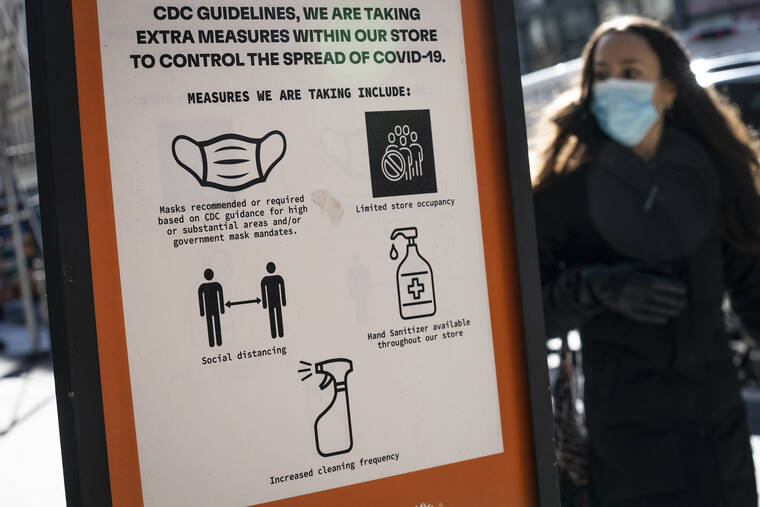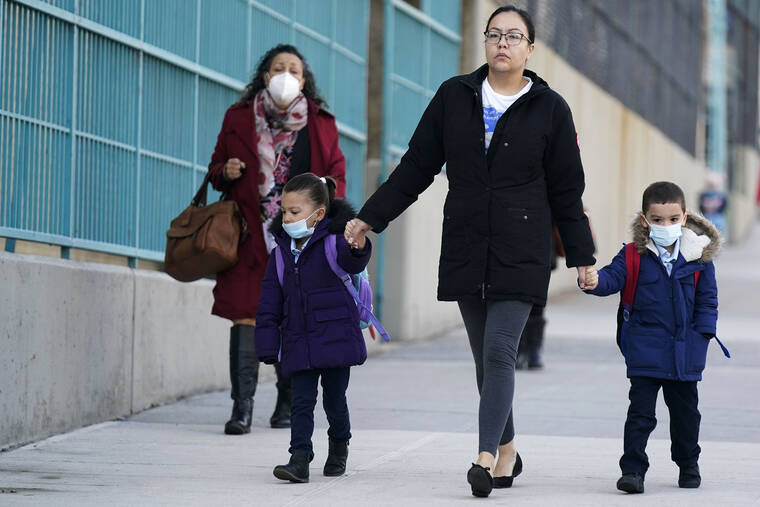Number of COVID patients in US hospitals reaches record low
NORFOLK, Va. — COVID-19 hospitalization numbers have plunged to their lowest levels since the early days of the pandemic, offering a much needed break to health care workers and patients alike following the omicron surge.
The number of patients hospitalized with the coronavirus has fallen more than 90% in more than two months, and some hospitals are going days without a single COVID-19 patient in the ICU for the first time since early 2020.
The freed up beds are expected to help U.S. hospitals retain exhausted staff, treat non-COVID-19 patients more quickly and cut down on inflated costs. More family members can visit loved ones. And doctors hope to see a correction to the slide in pediatric visits, yearly checkups and cancer screenings.
“We should all be smiling that the number of people sitting in the hospital right now with COVID, and people in intensive care units with COVID, are at this low point,” said University of South Florida epidemiologist Jason Salemi.
But, he said, the nation “paid a steep price to get to this stage. … A lot of people got sick and a lot of people died.”
Hospitalizations are now at their lowest point since summer 2020, when comprehensive national data first became available. The average number of people hospitalized with COVID-19 in the last week nationwide dropped to 11,860, the lowest since 2020 and a steep decline from the peak of more than 145,000 set in mid-January. The previous low was 12,041 last June, before the delta variant took hold.
The optimistic trend is also clear in ICU patient numbers, which have dipped to fewer than 2,000, according to the U.S. Department of Health and Human Services.
“We’re beginning to be able to take a breath,” said Dr. Jeffrey Weinstein, the patient safety officer for the Kettering Health hospital system in western Ohio.
COVID-19 patients had filled 30% of Kettering Health’s nearly 1,600 hospital beds back in January, Weinstein said. Kettering’s eight hospitals now average two to three COVID-19 admissions a day — and sometimes zero.
And while Salemi agreed this is a good time for an exhausted health care system to take a breath, he warned that the public health community needs to keep an eye on the BA.2 subvariant of omicron. It’s driving increases in hospitalizations in Britain, and is now estimated to make up more than half of U.S. infections.
“We’re probably under-detecting true infections now more than at any other time during the pandemic,” Salemi said.
For now at least, many hospitals are noting the low numbers.
In California on Thursday, UC Davis Health tweeted that its intensive care unit had no COVID-19 patients for two consecutive days for the first time in two years.
“The first COVID-19 patient to arrive in our ICU did so in February 2020, and the unit treated at least one positive individual every day since, for at least 761 consecutive days,” the hospital system said.
Toby Marsh, the chief nursing and patient care services officer, said in a statement that they hope the numbers “are indicative of a sustained change.”
In Philadelphia, patients are spending less time in the Temple University Health System because there are no longer backlogs for MRIs, CT scans and lab tests, said Dr. Tony Reed, the chief medical officer.
Temple Health’s three hospitals had six adult COVID-19 patients on Thursday, likely its lowest patient count since March 2020, Reed said.
During the omicron surge, patients waited as long as 22 hours for a routine MRI, which is normally done within 12 hours. Longer waits affected those who came in with trouble walking — and in a lot of pain — for example, because of a herniated disc pinching their sciatic nerve.
“Nobody wants to stay in the hospital a day longer than they have to,” Reed said.
The emptying of beds is also helping patients in rural areas, said Jay Anderson, the chief operating officer for Ohio State’s Wexner Medical Center in Columbus. During the surges, the hospital faced challenges accepting people from community hospitals who needed elevated care for brain tumors, advanced cancer and stroke. That burden is now being lifted.
Visitors also will return in higher numbers, starting Tuesday. Ohio State will no longer restrict patients to two designated guests, who could only stop by separately.
“Patients heal better when they have access to their family and loved ones,” Anderson said.
Doctors, nurses and respiratory therapists are also getting a much needed break in some areas.
In Colorado, Dr. Michelle Barron said the consistently low COVID-19 hospitalizations prompted smiles among staff, even as she double-checks the numbers to make sure they’re actually correct.
“I had one of these moments like, oh this is amazing,” said Barron, medical director of infection prevention and control at UCHealth University of Colorado Hospital. “It feels unreal.”
UCHealth loosened some restrictions, including dropping testing requirements for anyone who entered a facility. And while that produced some anxiety among staffers, Barron says the numbers haven’t spiked.
“I think some people have started to take vacations and not feel guilty,” she said. “I had spring break with my kids and it was a level of happiness where I went, oh my god, this is actually normal.”
The omicron surge had stretched staff at work — but also at home, said Dr. Mike Hooper, chief medical officer for Sentara Norfolk General Hospital in southeastern Virginia.
“It was stressful to be at the store … to visit your family,” Hooper said. “We’re all hoping that some ‘return to normalcy’ will help people deal with the inherent stresses of being part of the health care team.”
But just because hospitalizations are down does not mean hospitals are empty, said Dr. Frank Johnson, chief medical officer for St. Luke’s Health System in Idaho.
Some measures — like wearing masks in certain settings — will remain in place.
“I don’t know when we may go back to old practices regarding mask wearing in our clinical areas,” Johnson said. “We’ve seen some benefits of that in terms of reduction in the number of other viral infections.”



